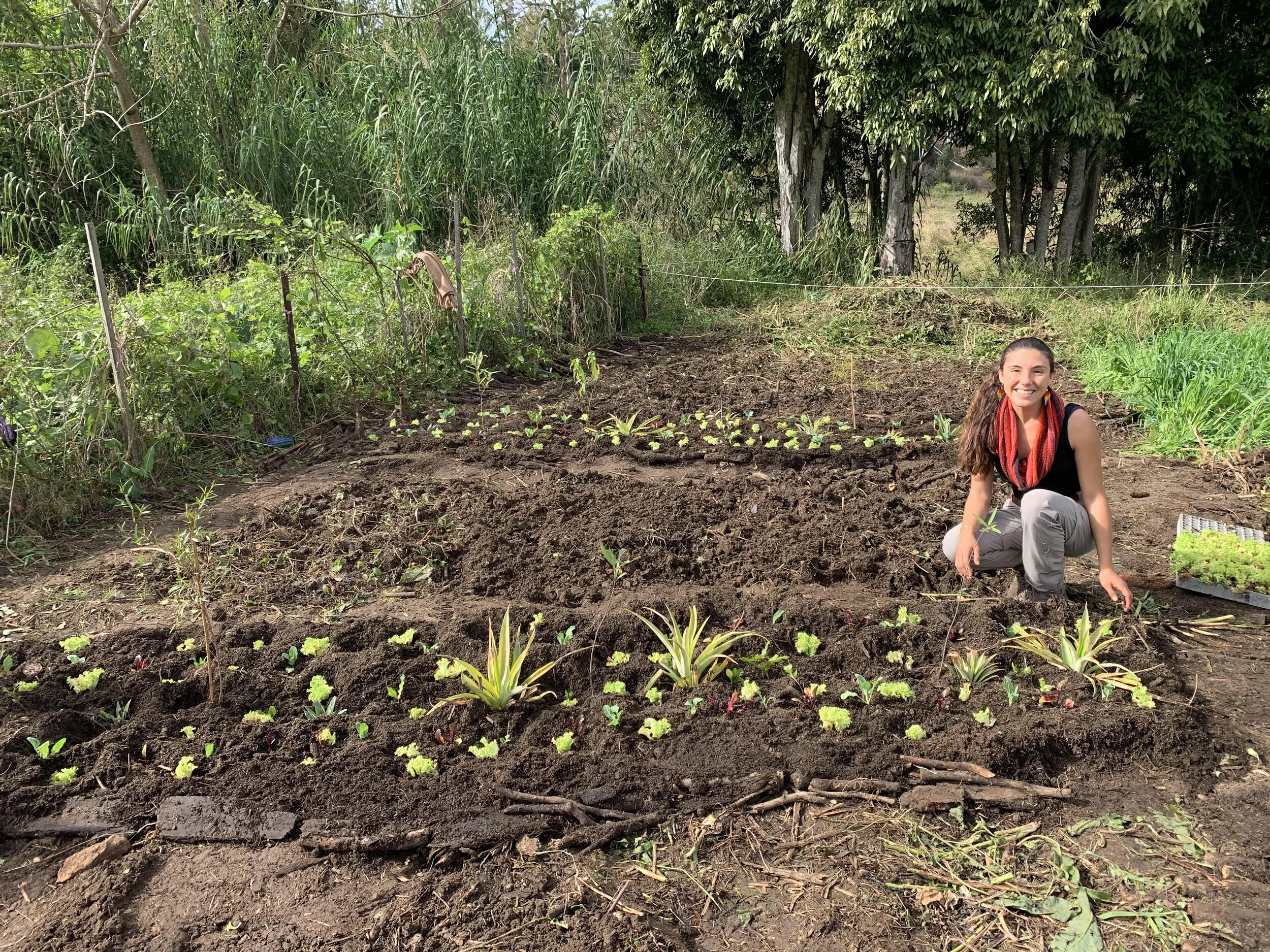What is Syntropic Farming?
One of my biggest dreams and intentions is for us to be able to be community-sufficient living in harmony with the land and feeling part of the land and for that I take any opportunity I have to learn, experience and research about different ways in which we can achieve that.
Last year, my partner Joel and I did a syntropic farming course at Khrisna Village in Northern NSW Australia with Thiago Gimenez Barbosa. This was the first time I was introduced to a universal concept “Syntropy” specifically applied to regenerate ecosystems that aims to mimic the way forest plants work symbiotically to grow in abundance.
Before going into the principles of syntropic farming I would like to touch on the concept of syntropy which I found quite profound. Syntropy is the coming together of life. Syntropy is the potential for new life, new meaning and new ways of being which emerges from the chaos and decay of entropy. (to explore more the concept and meaning behind this term I highly recommended reading this blog: What is Syntropy? by Ganga Devi Braun)
The syntropic farming method was developed by Swiss-Brazilian scientist, Ernst Gotsch modelling nature and viewing humans as part of an intelligent system. Ernest has spent almost 50 years researching land regeneration and food production. To get a vast understanding and see the origins and roots of it watch the video: Life in Syntropy.
Our two day course started with a walk around the wild forest at Khrisna Village where we were asked to just observe how trees, vines, small plants, weeds, flowers, grow and interact between each other and to reflect how through the whole of history of planet earth life naturally moves from simple to abundant.
Our knowledgeable brazilian teacher, Thiago, mentioned how our role is just to help accelerate the process that will naturally occur in the ecosystem. And how this can only be achieved by realising that it cannot only be focused on the best interest of humans, but it needs to consider the whole ecosystem.
“We must understand functions of plants through time and space. We need abundance not scarcity mindsets. Bring as much energy as you are taking. Always turn the problem into a solution.”
Some words of Thiago that are still very present in my head. This can only be achievable by keeping and open mind and being ready to shift your perception and your mindset.
Ernst’s research has established that using syntropic principles, humans in collaboration with nature can regenerate ecosystems in a third of the time an ecosystem can regenerate unassisted.
FIVE PRINCIPLES:
Ground cover (fertile soils)
Maximise photosynthesis (the process of making life from light)
Natural Succession
Stratification
Management
During our course we observed and applied all the principles in the already exciting syntropic farm in Khrisna Village and we also planted beds for future plants where we put as many as 100 seeds per square meter and what you plant is not only to harvest for consumption but to give back to soil and enrich it.
In the course there where people from all walks of life and different beliefs, the most powerful story Thiago shared with us was about Jane Hawes and her husband Neil who where third generation traditional flower farmers in Tolga Queensland and who starting having a different approach to farming after their entire farm was wiped out twice by hurricanes Larry and Yasi.
After we left NSW in on way up the cost we caught up with Thiago again and visited Jane and Neils’s farm. At Petal Farm we were able to see the long term, big scale, commercial potential that this method has and moreover we were able to chat with Jane and Neil and witness how these principles have the potential to shift peoples mindset and perspectives.
This is just a brief introduction to a revolutionary concept which thankfully is becoming more and more popular. Thiagos’ organisation is called Syntropic Solutions where yo can find more about what they do, and keep in touch through their social media for future courses in person and online.
Since our course back in June 2020, my partner and I have been travelling around Australia visiting many farms, learning about models and doing more courses, in terms of the future of agriculture, Syntropic farming is the one which really got not only into my mind but also into my heart.
I will like to finish by leaving this video where Syntropic farming is incredibly and beautifully integrated with permaculture principles in New Zealand:














